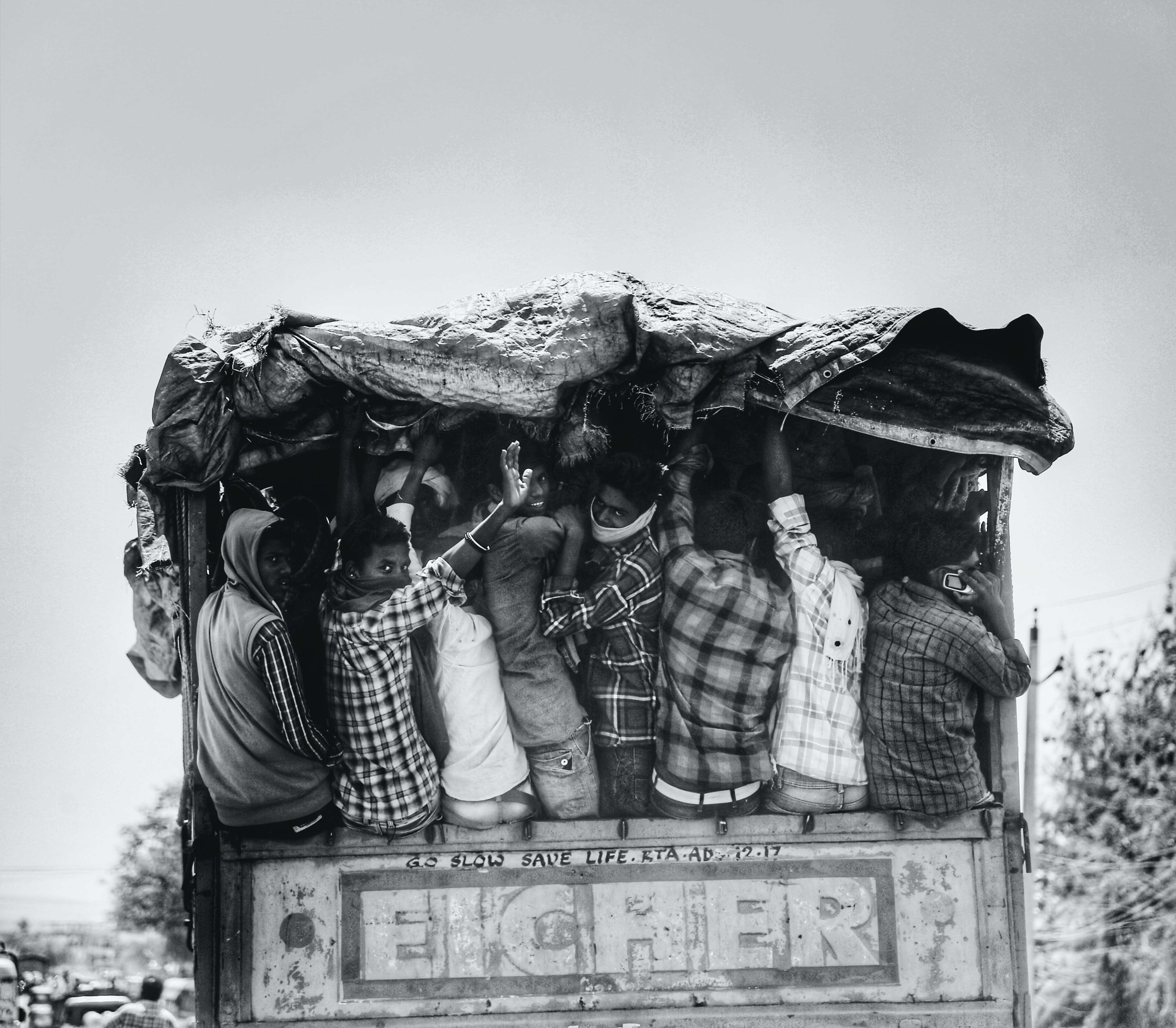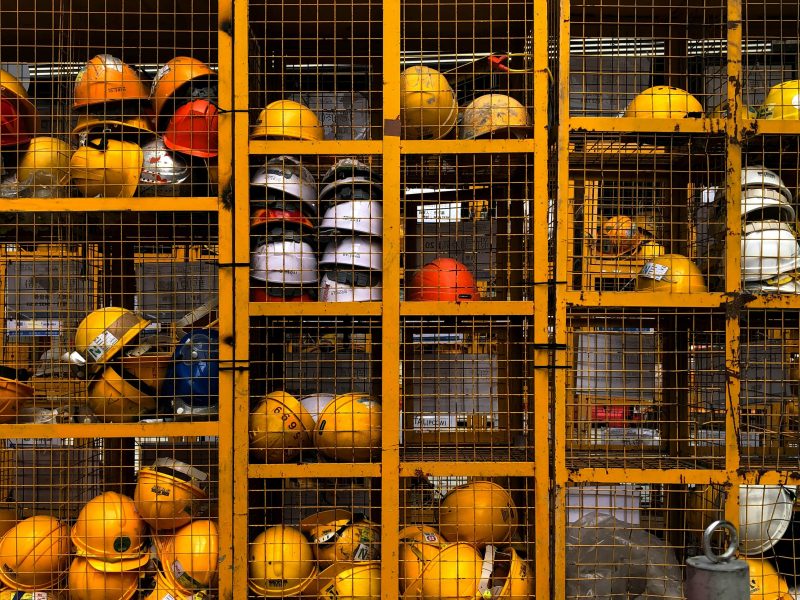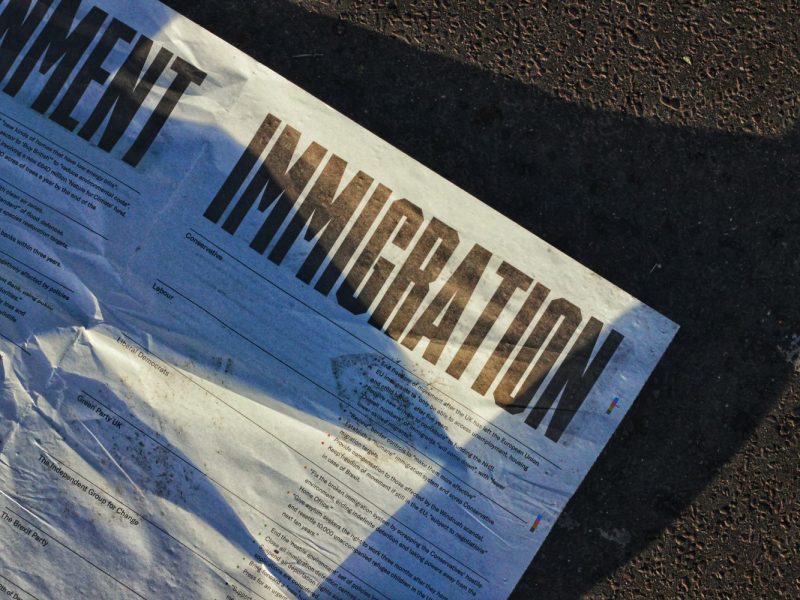Refugees struggle to integrate into host countries’ labour market and asylum policies can play an important role in determining their assimilation trajectories
Based on research by Francesco Fasani, Tommaso Frattini and Luigi Minale
In recent years European countries have received an unprecedented number of asylum seekers, with almost 5 million protection applications filed between 2012 and 2018 and the number of those with recognized refugee status rising from 1.3 to 2.5 million. Coming to today’s tragic times, at least 1 million civilians have already fled Ukraine since Russia’s invasion began seven days ago, and the European Union estimates that up to four million people may try to leave the country in the next future. All the numbers above raise the question of how to effectively and smoothly integrate such a large refugee population into host countries’ labour markets and societies. Therefore, understanding which specific features of asylum legislation can accelerate or hinder refugee integration lies at the core of the current economic and policy debate.
The refugee-immigrant gap in labour outcomes is large and persistent
A preliminary condition to understanding what works in facilitating refugees’ labour market integration is to establish what their assimilation path looks like. Despite the large literature on the assimilation of migrants, the existing evidence on refugee integration is, in fact, limited, partly because data allowing explicit differentiation of immigrants by entry category is scarce (Dustmann et al. 2017). In the first work within this research agenda ((The struggle for) refugee integration into the labour market: Evidence from Europe), we employ ad-hoc modules of the European Labour Force Survey to investigate the labour market performance of refugees vis-à-vis comparable migrants across several EU countries and over time. Being able to distinguish between refugees and other migrants, we document that labour market outcomes for refugees are consistently worse than those for other migrants. Refugees are 11.6 percent less likely to have a job and 22 percent more likely to be unemployed than other migrants with similar characteristics. Moreover, their income, occupational quality and labour market participation are relatively weaker. These refugee-immigrant gaps are larger relative to economic than non-economic migrants, are smaller for women than for men, vary across areas of origin and, importantly, tend to persist up to 10-15 years after arrival in the host country, as Figure 1 below shows.
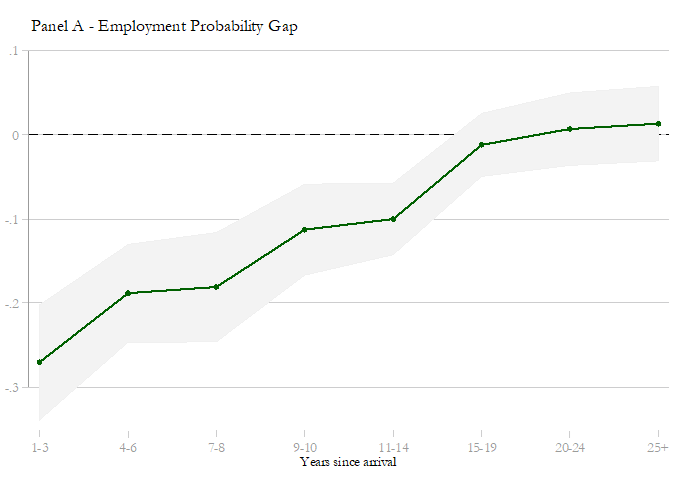
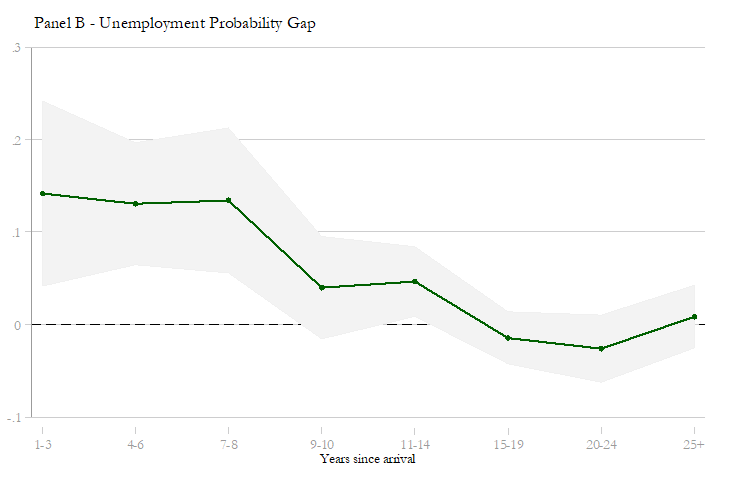
Figure 1 – Refugee-immigrant employment and unemployment gaps, by years since arrival
The role of initial conditions
In the same study, we also investigate the role of initial conditions in shaping the integration paths of refugees versus migrants. Migrants usually carefully choose the time of migration and their destination to maximize migration returns. However, asylum seekers might have limited ability in choosing when to migrate. In fact, being forced to flee violence and conflict, refugees are likely to be less responsive to the state of the host country’s economy than economic migrants, potentially increasing their likelihood of arriving in destination countries during economic downturns. When studying the effects of immigrating into a recession, we document the scarring effects of economic downturns for all immigrants (see also Barsbai, Steinmayr and Winter, 2022). At the same time, we observe a differential effect for forced migrants only when we compare them to economic migrants. Therefore, this channel does not seem to be able to explain the observed refugee-immigrant gap.
Another key element in determining the success of refugees are the characteristics of the arrival location. However, in many countries, the ability of refugees to choose the location where to settle is limited by Dispersal Policies, whereby immigrants seeking humanitarian protection are centrally allocated to specific areas of the country. Dispersal Policies typically aim to prevent ethnic enclave formation by scattering refugees across the country and often away from larger cities. However, they do so by constraining the geographical mobility of refugee migrants and making centralized allocation decisions that are often orthogonal to local labour demand. Their net impact is therefore an empirical question. We estimate a persistent detrimental impact of Dispersal Policies on the labour market performances of dispersed refugees. For instance, the refugee-migrant gap in employment is 4.5 percentage points larger for refugees who arrived when a Dispersal Policy was in place than for refugees not exposed to such a policy. One mechanism through which the effect of Dispersal Policies seems to operate is by permanently altering the geographical distribution of refugees in host countries. Indeed, dispersed refugees are more likely to reside in areas characterized by systematically less favorable conditions for labour market integration than non-dispersed refugees. These results speak directly to recent work on refugee matching that has discussed ways to improve the allocation of refugees, both across countries and across locations within any given country (Bansak et al. 2018).
Asylum policies have long-lasting effects: the case of employment bans
Part of the difficulties refugees face trying to integrate into receiving societies is inherently associated with the forced nature of their migration. However, what happens next is at least partially in the hands of host governments that may indeed influence the speed and quality of refugee integration through their asylum policies.
A common and highly debated asylum policy is to impose temporary employment bans that prevent asylum seekers from working during the application process. Unless the duration is statutorily limited, these bans are often lifted only after the applicant is granted refugee status. In Europe, though such employment ban policies have become less strict over time, most countries still implement some form of temporary ban for all asylum seekers.
In a second paper within the same research agenda (Lift the Ban? Initial Employment Restrictions and Refugee Labour Market Outcomes), we assess the medium to long-term effects of employment bans on the labour market outcomes of refugees. We do so by gathering almost 30 years of data on the presence and length of employment bans across 19 European countries and combining them with cross-sectional information on refugees who arrived from 1985 onwards. Our empirical approach exploits the geographical and temporal variation in employment bans generated by the staggered introduction or removal of bans, together with frequent changes of the bans’ durations. These policy changes deliver variation in ban exposure, both across refugee entry cohorts within the same destination country and within entry cohorts across destination countries. Using this empirical approach, we derive three major findings.
First, being banned from employment at entry reduces refugee employment probability in the medium run by 8.9 percentage points, or 15.2 percent, as Figure 2 shows. This negative effect is explained primarily by a 9.2 percentage point lower labour market participation than by a higher unemployment probability. To make sure that our results can be interpreted as causal we present in the paper a number of tests. Among them is a placebo analysis on a sample of non-refugee migrants that closely resemble the refugees but were not subject to the employment ban, which delivers a precisely estimated zero effect (see Figure 2 below).
To get an idea of the quantitative relevance of the impact, we calculate it is equivalent to about a 4-year delay in the integration process. As regard the role of ban duration, we find that exposure to longer bans has a larger negative effect than to shorter ones. Still, the marginal effect of ban length decreases, implying that the most detrimental effects are likely to materialize during the first months of the ban. Importantly, the impact of employment bans is highly persistent, with negative effects remaining sizeable up to 10 years post-arrival despite growing smaller over time.
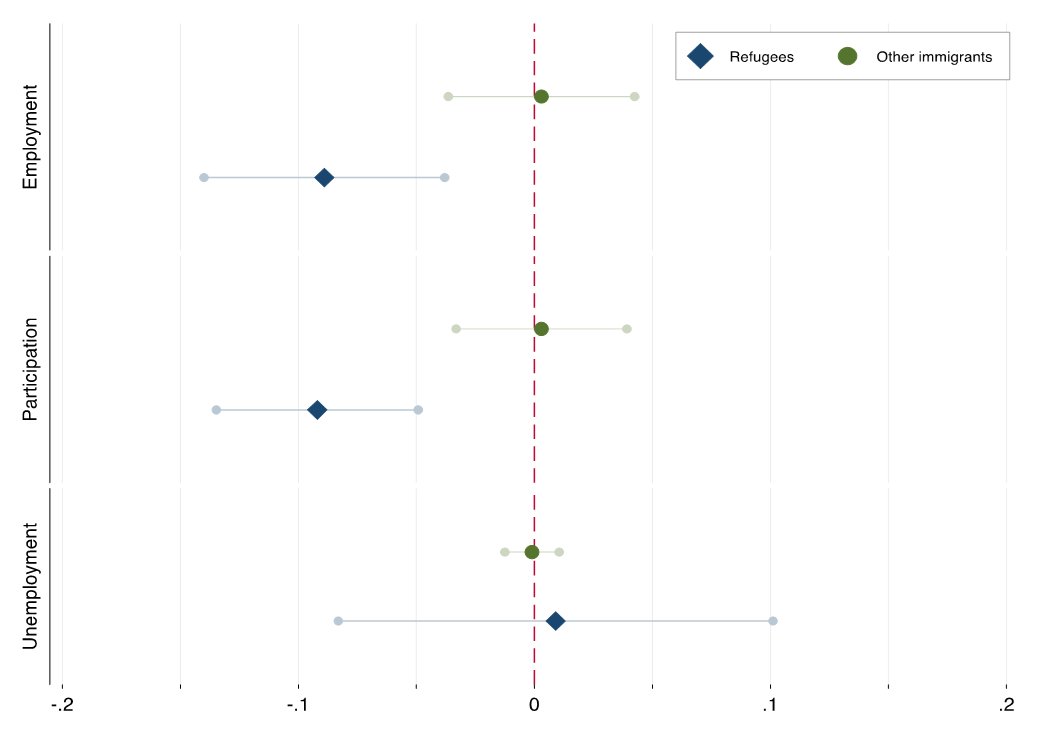
Figure 2: Effect of employment bans on labour market outcomes
Mechanisms and quantification
To identify which mechanisms may be at work, we first document that the detrimental effects of employment restrictions concentrate among less-educated refugees, suggesting that bans mainly harm migrants whose employability in host countries is already relatively limited. Then, by considering a broader range of outcomes, we observe that banned refugees also experience lower occupational quality (lower likelihood of employment in a high skilled occupation and higher probability to have a temporary job), report lower proficiency in the host country language, and have more health issues and a greater likelihood of receiving benefits. Using aggregate Eurostat data on asylum seekers and refugees, we then assess whether employment bans influence refugee flows and find no evidence to support this conjecture.
Finally, we use our estimates to quantify the cost of imposing employment bans on asylum seekers who arrived in Europe during the crisis years of 2015−2016 in terms of both potential output loss for the EU economy and forgone earnings for the asylum seekers who remained as refugees. We estimate that the ban imposed on over 1 million new refugees may have resulted in an overall output loss of EUR 37.6 billion over eight years, equivalent to about EUR 4,100 per banned refugee per year.
Implications
Evidence from past refugee waves suggests that the socio-economic integration of forced migrants is often difficult and slow, in part because of difficulties inherent to the compulsory, unplanned and often traumatic nature of refugee migration. Yet, what happens after arrival is at least partially in the hands of the host government. Asylum policies might indeed produce long-lasting effects on the assimilation trajectory of refugees. Whereas allowing asylum seekers some months to recover physically and psychologically may be beneficial for their long-term integration, forcing them out of the labour market seems an ill-conceived approach. That is, to be effective, a period of initial idleness should be coupled with well-designed and well-funded programs of counselling and training, a complex and expensive task for host countries. As a more pragmatic alternative, our findings point to the need for a zero-cost policy that effectively accelerates refugee integration by lifting barriers to their labour market access. While requiring only relatively brief legislative intervention and no additional funding, it would generate substantial gains for refugees and host societies.
About the Authors
Francesco Fasani is an Associate Professor at the University of Milan. He works on labour economics, migration and crime.
https://sites.google.com/site/fasani2010/
Tommaso Frattini is a Full Professor at the University of Milan. He is interested in the economics of migration.
https://sites.unimi.it/tommasofrattini/
Luigi Minale is an Associate Professor of Economics at Universidad Carlos III de Madrid. He is an applied economist interested in labour economics, migration, development and political economy.
https://sites.google.com/site/luigiminale/
Further Reading
Fasani, F., Frattini, T., & Minale, L. (forthcoming). (The struggle for) refugee integration into the labour market: Evidence from Europe. Journal of Economic Geography
Fasani, F., Frattini, T., & Minale, L. (2021). Lift the Ban? Initial Employment Restrictions and Refugee Labour Market Outcomes. Journal of the European Economic Association, 19(5), 2803-2854.
References
Bansak, Kirk, Jeremy Ferwerda, Jens Hainmueller, Andrea Dillion, Dominik Hangartner, Duncan Lawrence, and Jeremy Weinstein. (2018). Improving refugee integration through data-driven algorithmic assignment. Science, 359(6373), 325-329
Barsbai, T., Steinmayr, A., & Winter, C. (2022). Immigrating into a Recession: Evidence from Family Migrants to the US. CReAM Discussion Paper 01/22.
Dustmann, Christian, Fasani, Francesco, Frattini, Tommaso, Minale, Luigi, Schönberg, Uta, (2017). On the economics and politics of refugee migration. Economic Policy, 32(91), 497–550.

